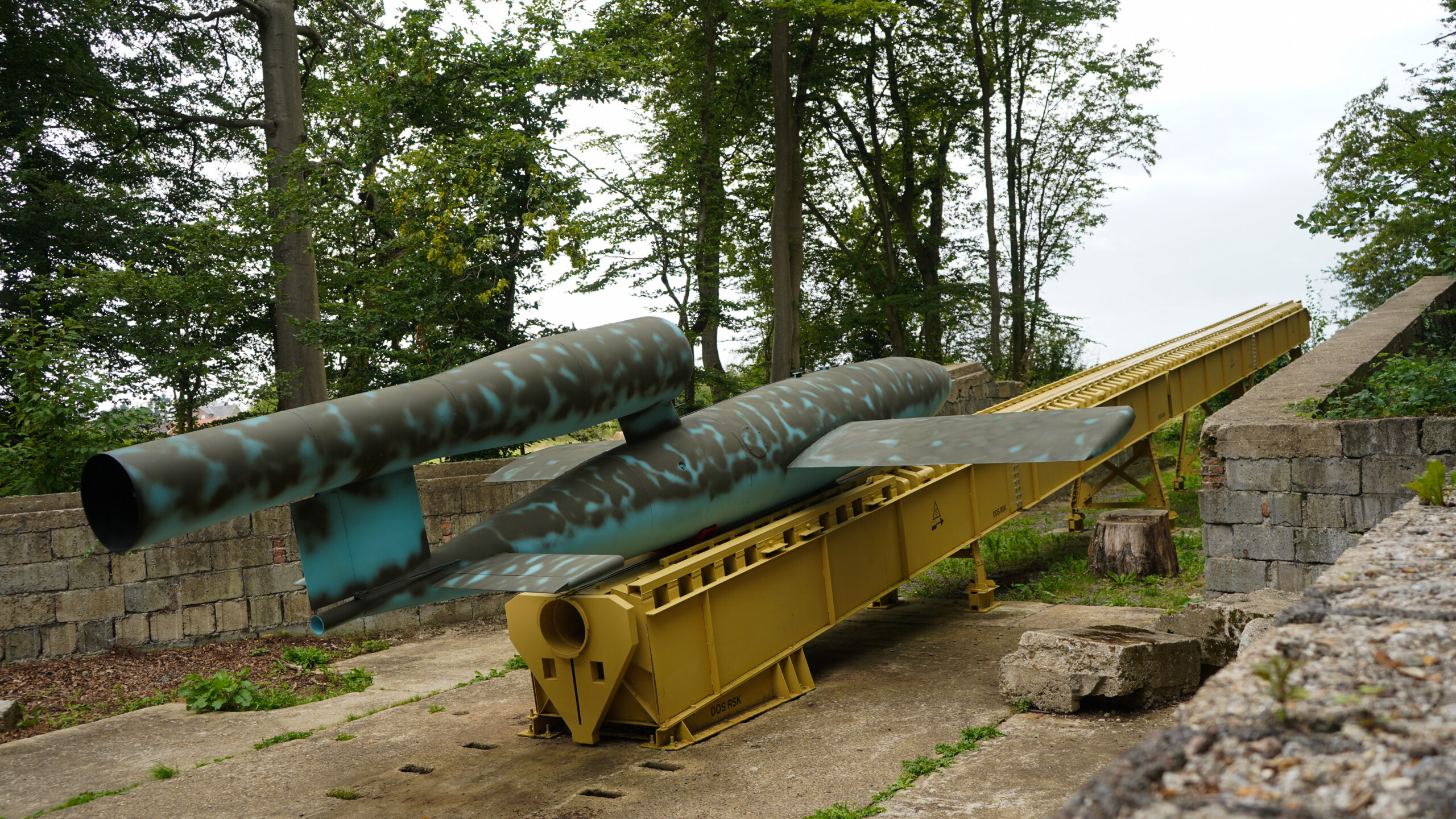
Vous êtes ici : Accueil / Présentation & Historique

Vous êtes ici : Accueil / Présentation & Historique
À l’été 1943, s’ouvrent les premiers chantiers des sites de lancement en France, tous situés à proximité des côtes de la Manche. Avant même leur mise en service, certaines de ces bases sont repérées et pilonnées par l’aviation alliée. Malgré cela, les premiers tirs de V1 ont lieu dans les derniers jours du printemps 1944. L’objectif du V1 est avant tout psychologique : en frappant de manière aveugle la population des grandes villes du sud de l’Angleterre, l’état-major allemand espère affaiblir le moral et la détermination des Britanniques. Pour être efficace cette stratégie requière un bombardement intensif, les V1 sont donc produits rapidement et à bas coût.
Suite au débarquement du 6 juin 1944, les Allemands sont progressivement contraints d’abandonner leurs bases de lancement en France. Dans les derniers mois de l’année 1944, les tirs de V1 se poursuivent depuis de nouveaux sites implantés en Belgique et en Allemagne. Cette fois-ci ce sont les principales agglomérations belges, récemment libérées par les Alliés, qui sont visées. En janvier 1945, alors que le Reich est de plus en plus acculé, une ultime tentative de bombardements du sud de l’Angleterre grâce à un V1 à plus longue portée est lancée, en vain.
Le 30 mars 1945 à 8h est tiré le dernier V1 de l’histoire.
Les V1 dans les vallées de la Bresle et de l’Yères
Épave d’un V1 dans la plaine près d’Aubermesnil-aux-Érables, la bombe volante est examinée par des soldats canadiens, 5 septembre 1944 (Library and Archives Canada Photo, MIKAN No. 3239436)
Entre la Bresle et l’Yères, les forces armées allemandes ont déployé plus d’une vingtaine de sites de lancement V1, certains ont été opérationnels, d’autres non, n’ayant pu être achevés à temps du fait de l’avancée des Alliés ou ayant été repérés et bombardés par l’aviation alliée. L’essentiel de ces installations était braqué vers Londres, des villes du sud de l’Angleterre comme Southampton ont également pu être prises pour cible.
Dans la nuit du 12 au 13 juin 1944, sur les sites de lancement du Poteau de Montauban à Guerville et du Mont Gournoy à Aubermesnil-aux-Érables et Rétonval, ont été tirés (de sources sûres) les premiers V1 de Seine-Maritime. L’ensemble de ces sites a régulièrement été pilonné par des raids de l’aviation britannique, américaine et même française de la RAF. Certains d’entre eux ont été neutralisés à la suite de ces intenses bombardements.
Après-guerre, ces sites de lancement ont été démontés (en dépit des bombardements certains étaient jusqu’alors restés presque intacts), les matériaux de construction utilisés étaient ainsi récupérés pour permettre la reconstruction des villages alentours. Progressivement la nature a repris ses droits et le temps a fait son œuvre, cela explique l’état variable des différents sites présents sur le territoire.
Guerville – Poteau de Montauban – Site Nr 161
Campneuseville – Beaulieu – Site Nr 671
Saint-Riquier-en-Rivière – Poteau Maître Jean
Saint-Léger-aux-Bois – Le Mesnil Allard – Site Nr 673
Saint-Léger-aux-Bois – Les Sapins
Rieux – Val de l’eau – Site Nr 163
Richemont – Les Cateliers – Site Nr 183
Richemont – Le transformateur – Site Nr 182
Rétonval – La Ventillette – Site XXX
Rétonval – Le Mont Gournoy – Site Nr 187
Rétonval – Le bout du haut – Site Nr 188
Réalcamp – Les hauts buissons – Site Nr 170
Réalcamp – Les Essartis – Site Nr 169
Réalcamp – Le grand marché – Site Nr 180
Les Landes – Piste 60 – Site Nr 189
Campneuseville – La Houssaye – Site Nr 179
Campneuseville – Bérémont – Site Nr 171
Aumale – Bois de la Vierge – Nr 192
Aubéguimont – Coquereaux – Nr 184